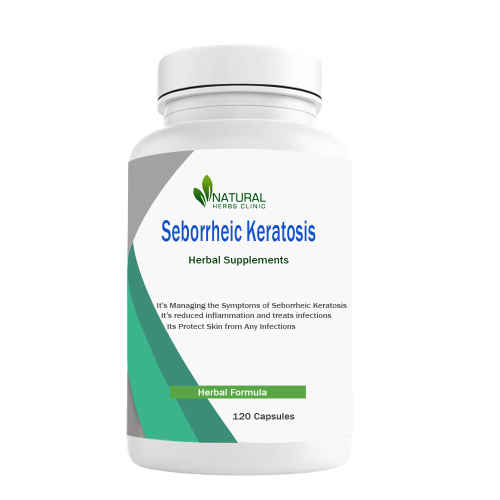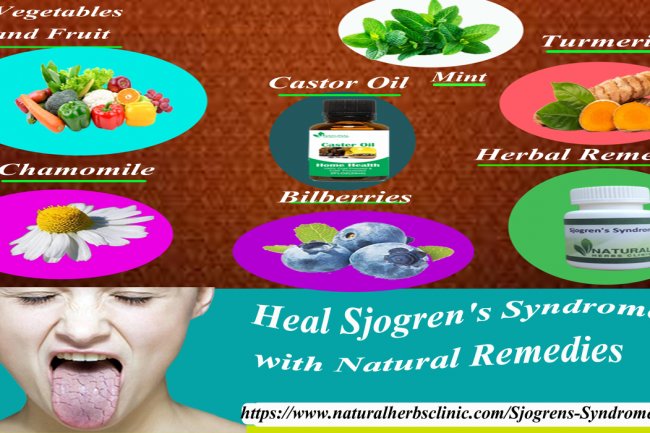Natural Remedies for Seborrheic Keratosis: Suitable Treatment Technique
Natural Remedies for Seborrheic Keratosis include apple cider vinegar and tea tree oil have been shown to help with the pain.

Natural Remedies for Seborrheic Keratosis include apple cider vinegar and tea tree oil have been shown to help with the pain.
Definition of Seborrheic Keratosis
Seborrheic keratosis, an extremely common skin condition, can cause lumpy or rough patches of skin. Together with some straightforward medical procedures, there are some natural treatments for these pimples. In this blog post, we'll discuss the many natural treatments for seborrheic keratosis to assist you in making the best decision.
Causes and symptoms of Seborrheic Keratosis
A benign skin growth may result from the skin disorder seborrheic keratosis. These appear to become more frequent as people get older, however, the cause of the increase is unclear. To lessen or eliminate these growths, natural remedies like coconut oil, apple cider vinegar, and tea tree oil can be administered topically. Dietary changes and natural supplements that may help strengthen immunity and alleviate symptoms are some examples of all-natural remedies. It's important to keep in mind, though, that alternate approaches to treating seborrheic keratosis might not be as effective or might not work at all. In light of this, it is essential to see a qualified healthcare professional before beginning any natural remedies for your skin condition.
Seborrheic keratosis typically manifests as raised, waxy-looking pimples on the skin that can range in hue from yellowish-brown to black. These tumors may be unpleasant or sensitive, and they may occur in any area of the body singly or in bunches. Seborrheic keratosis is another skin condition that commonly appears as raised, waxy-appearing lumps on the skin. These zits range in hue from yellowish-brown to black and can be uncomfortable or itchy. Seborrheic keratosis is typically not harmful, but if you wish to treat the condition, there are natural solutions accessible.
Evaluating Seborrheic Keratosis Therapy Options
Seborrheic keratosis treatment options need to be thoroughly investigated in order to produce the best results. Therapy other than freezing, blistering, or surgical excision may be more effective for a particular patient's needs. One Natural Treatment for Seborrheic Keratosis is cream containing chemicals like salicylic acid and glycolic acid, which help the lesion peel off over time. Natural remedies like apple cider vinegar or tea tree oil may occasionally be used to treat seborrheic keratosis in order to reduce swelling. So, it's essential to speak with a doctor or dermatologist to determine which seborrheic keratosis treatment is best for you and your particular situation.
Despite the possibility of momentary redness or swelling when it is applied, liquid nitrogen cryotherapy can effectively treat seborrheic keratosis. It is essential to speak with a healthcare provider about any potential side effects and the most practical course of action before deciding on cryotherapy as a treatment. There are various natural remedies for seborrheic keratosis, including cryotherapy. Many individuals are aware that seborrheic keratosis can be reduced in size and appearance by adopting natural treatments like castor oil, apple cider vinegar, and tea tree oil. It is best to see a doctor before beginning any kind of natural treatment for seborrheic keratosis.
Benefits of Natural Remedies for Seborrheic Keratosis Treatment
Natural treatments for seborrheic keratosis offer a variety of advantages over medical therapy, including not requiring time off from work or school for doctor appointments, cost savings on medical bills, and a decreased risk of severe pharmaceutical side effects. One of the many easy at-home remedies for seborrheic keratosis is the use of organic oils and herbs that can hinder or stop the growth of lesions. Natural treatments for seborrheic keratosis are frequently affordable, even though many natural ingredients can be bought in grocery stores and health food stores. Last but not least, because they are less likely to have any unwanted side effects, adopting natural therapies is a safe and effective choice.
Seborrheic Keratosis Natural Treatment typically provide faster relief than modern therapies and are just as effective, so you may return to your life sooner rather than later without compromising the quality of your care. Natural seborrheic keratosis treatments are a fantastic way to quickly resolve the problem. Because they can have benefits that are equally as effective as medical therapy and may even provide faster relief, you won't have to wait long for your symptoms to go. Natural treatments are an excellent way to recover rapidly without sacrificing the caliber of your care.
Home Remedies for Seborrheic Keratosis
For those seeking Natural Remedies for Seborrheic Keratosis, apple cider vinegar, and tea tree oil can both diminish the appearance of seborrheic keratosis. Apply the solution to the area affected by seborrheic keratosis using a cotton ball after mixing equal parts water and apple cider vinegar. After leaving it on for 10 to 15 minutes, rinse it with warm water. Using tea tree oil diluted with a spoonful of coconut oil or jojoba oil topically can alleviate seborrheic keratosis. Rinse with warm water ten minutes later. Any treatment may need to be applied repeatedly over time in order to be effective.
Seborrheic keratosis causes inflammation and redness, which can be mitigated with tea tree oil, a natural anti-inflammatory. Acetic acid, which is present in apple cider vinegar, can aid in skin exfoliation. Once more, folks who have seborrheic keratosis may find relief from the condition using natural remedies like apple cider vinegar and tea tree oil. While apple cider vinegar's acetic acid can aid in the removal of the top layer of skin and tea tree oil's ability to act as a natural anti-inflammatory to help minimize redness and irritation. The symptoms of seborrheic keratosis may be relieved by these natural remedies.
Investigating Natural Remedies for Seborrheic Keratosis
The investigation of traditional herbal medicines' potential as seborrheic keratosis treatments is an intriguing development in SK research. The telltale sign of seborrheic keratosis, a common non-cancerous skin disorder, is a raised, black patch on the epidermis. The majority of seborrheic keratoses are benign, but standard treatments can involve chemical or physical excision. As a result of research into traditional herbal medications, there is increased interest in adopting Home Remedies for Seborrheic Keratosis without removing it surgically. Research on seborrheic keratosis has advanced, creating new opportunities for the effective and safe treatment of this common skin condition.
We must weigh both the positive and negative impacts of particular herbs and plant-based ingredients in order to determine whether they may be used safely and effectively for SK treatment. Although home treatments for seborrheic keratosis have been around for a while, there is currently little scientific proof to back them up. Traditional home remedies usually include natural ingredients like tea tree oil, apple cider vinegar, aloe vera, and others. While some home treatments may be beneficial for specific individuals, others have risks and should only be used under a doctor's care. Before utilizing any home remedies, a doctor should always be contacted, and they should never take the place of any topical medications that have been prescribed.
The effectiveness, safety, and potential adverse effects of various herbal therapies for seborrheic keratosis must also be evaluated through adequate clinical research. You should also see a doctor before using any at-home remedies for seborrheic keratosis. Home remedies may offer some momentary relief, but it's important to ensure that they are secure and efficient by doing the appropriate clinical studies to evaluate their efficacy and any possible side effects. This is essential since improper or insufficient use of home remedies can lead to skin damage.
Aloe Vera
Use aloe vera gel twice a day to the seborrheic keratosis in a manner similar to how castor oil is used. Search for aloe vera products that don't contain a lot of chemical additives. Another choice is to use fresh aloe from your own plant.
Even while it will take time for any of these treatments to entirely cure seborrheic keratosis, results are typically seen within a week or two.
Apple Cider Vinegar
Seborrheic keratosis can be treated topically with organic, raw apple cider vinegar. Add one part apple cider vinegar to three parts water if the seborrheic keratoses are on the face. The seborrheic keratosis is subsequently treated with the solution two to three times each day.
Apple cider vinegar can be used to treat any keratoses on other body parts when administered with a cotton ball. Use a skin protectant, such as castor oil, on healthy skin before putting on a bandage. Replace the cotton ball and apple cider vinegar bandage after 12 hours or only use this cure at night.
Castor Oil
One of the best topical Natural Remedy for Seborrheic Keratosis is castor oil. Only twice every day, apply castor oil to the newly developed skin. Castor oil may be the greatest remedy for people with sensitive skin because it is calming and generally healthy for the skin.
Last Word
To summarise, there are several home cures for seborrheic keratosis. Even if there are pharmaceutical solutions for this issue, using natural treatments for seborrheic keratosis at home is frequently a better option because there are no potential side effects.
What's Your Reaction?

















